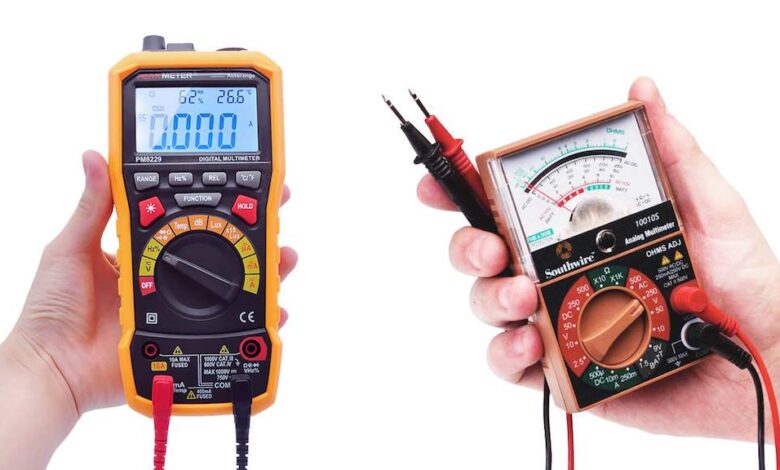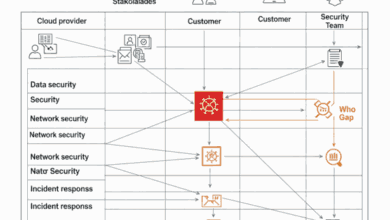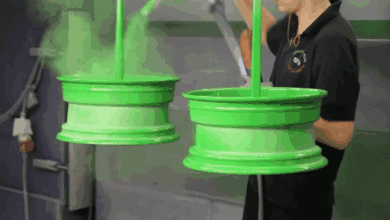Tools to Measure Electricity: Electrify Your Knowledge and Safety Skills

Hey there, fellow tech enthusiasts! Get ready to electrify your knowledge and safety skills with our insightful section on tools to measure electricity. In this electrifying segment, we’ll journey into the world of electrical measurements and discover why accurate tools are the key to unlocking a world of knowledge and keeping ourselves safe.
Imagine trying to bake a mouth-watering cake without measuring your ingredients accurately. It’d be a recipe for disaster! Well, the same principle applies to measuring electricity. Accurate tools are the secret ingredient that ensures precise measurements, leading to reliable data, effective troubleshooting, and safe electrical systems.
This section explores everything you need to know about these magical measurement tools, from calibration to maintenance, safety practices, and expert tips. We’ll break it down into bite-sized pieces, making it easy to understand even if you’re new to electrical measurements. By the end, you’ll have the knowledge and confidence to wield these tools like a pro.
Our thesis for this section is simple but powerful: Embracing accurate tools to measure electricity is the path to unlocking a world of knowledge and ensuring your safety. With that in mind, let’s dive into the exciting world of electrical measurement tools and discover their wonders!
Get ready to electrify your understanding and take charge of your safety as we venture deeper into the realm of measurement tools. Buckle up, my friend, because this will be an electrifying ride!
Understanding Tools to Measure Electricity
If you’re interested in learning about electrical measurement, you’ve come to the right place! This section explains the basics of electrical measurement and introduces the different tools used to measure electricity. By the end of this section, you’ll better understand how to measure electrical current and voltage safely and effectively.
Basic Principles of Electrical Measurement
Before diving into the types of tools used to measure electricity, let’s first discuss the basic principles of electrical measurement. Electrical measurement involves measuring the flow of electrons through a circuit. This is typically done by measuring voltage, current, and resistance. We’ll explain these concepts in more detail in the following sections.
Different Types of Tools Used to Measure Electricity
When it comes to measuring electricity, several different tools are available. These tools can be broadly categorized into two types: analog and digital. Analog tools use traditional displays such as needles or dials to show the measurement value. In contrast, digital tools provide a numerical readout. Within each category, there are also direct and indirect measurement tools.
- Analog vs Digital
Analog tools have been used for many years, and most people are familiar with them. If you’re not, don’t worry! Analog tools are great because they can be easier to read and interpret than digital tools. They can provide an intuitive sense of how much voltage or current is present and how it’s changing.
Digital tools, on the other hand, are gaining popularity due to their ease of use and ability to provide precise numerical measurements. These tools use digital displays and are often equipped with features like data logging and automatic range detection.
- Direct vs Indirect Measurement
When measuring electricity, tools can also be categorized as direct or indirect. Direct measurement tools measure the current or voltage directly, while indirect measurement tools measure those values using a secondary measurement.
Advantages and Disadvantages of Different Types
Each type of tool has its own set of advantages and disadvantages. Analog tools are great for showing how much voltage or current is present and how it’s changing. However, they can be more challenging and may not provide precise measurements like digital tools can. Digital tools, on the other hand, are great for providing precise measurements. However, they can sometimes fail due to low battery life, making them less reliable.
Key Factors to Consider
Let’s dive into the key factors you should consider when choosing the right tools for measuring electricity. This section will help you understand what to look for and make an informed decision. So, let’s get started!
Accuracy, Resolution, Range, and Impedance
When it comes to measuring electricity, accuracy is crucial. You want tools that can provide precise measurements. Look for tools with high accuracy and resolution, which will ensure more accurate readings. They should also have a wide range of measurement capabilities to handle different electrical values. Additionally, consider the impedance of the tools, which affects how much the tool interferes with the measured circuit. Low-impedance tools are generally better as they minimize any impact on the circuit.
Safety Features and Certifications
Safety should always be a top priority, especially when working with electricity. Look for tools with built-in safety features like overload protection, fuse protection, and insulation. These features can help prevent accidents and protect you from electrical hazards. Also, ensure the tools have relevant certifications, such as being certified by UL (Underwriters Laboratories). These certifications ensure the tools meet safety standards and have been tested to guarantee reliability.
Budget and Intended Use
Consider your budget and the intended use of the tools. Determine how often you’ll be using them and your specific requirements. This will help you narrow your options and find tools that fit your budget. Investing in quality tools is important, as they will likely last longer and provide more accurate measurements.
Understanding the Specifications of Tools
When researching tools, you’ll come across specifications and technical details. Don’t worry; you don’t need to be an electrical engineer to understand them! Take the time to read and understand the specifications of the tools you’re interested in. Look for accuracy, resolution, range, safety features, and other relevant information. Compare these specifications among different tools to find the best fit for your needs.
Different Types of Tools to Measure Electricity
Alright, let’s talk about the different types of tools you can use to measure electricity. There’s a whole array of options, so let’s break it down and make choosing the right tool for the job easy. Ready? Let’s go!
Multimeters for Measuring Voltage, Current, and Resistance
Multimeters are Swiss army knives for electrical measurement. They can measure voltage, current, and resistance, making them versatile. Here are the different types of multimeters:
- Analog multimeters: These are the OGs of multimeters. They have those classic dials and needles that move to show you the readings. They can be trickier to read but are great for understanding how much voltage or current flows.
- Digital multimeters: These are like the upgraded version of analog multimeters. They have digital displays and provide precise numerical measurements. They’re easier to read and often come with additional features like data logging.
- Clamp meters: Now, these babies are a game-changer. They can measure current without having to disconnect the circuit. You clamp them around a wire, and boom, you get your reading. They’re handy for measuring current in tight spaces or when you don’t want to interrupt the flow.
Voltage Testers for Voltage Detection
If you need to detect voltage without measuring it, voltage testers are the way to go. Here are the two main types:
- Non-contact voltage testers: These little marvels can detect the presence of voltage without any physical contact. You hold them close to a wire or an outlet, and they’ll give you a heads-up if there’s voltage nearby. They’re quick, convenient, and perfect for a first-level safety check.
- Contact voltage testers: As the name suggests, these need actual contact with the wire or circuit to detect voltage. They come in various forms, like pens or probes. While they’re reliable, make sure to follow safety protocols when using them to avoid any shocks.
Circuit Tracers & Identifiers
Sometimes, you need to trace the path of a circuit or identify specific wires or cables. That’s where circuit tracers and identifiers come in. They use different methods like tone generation or signal detection to help you locate and identify circuits, making your life much easier.
Specialty Tools for Specific Electrical Measurement Tasks
Beyond the basics, there are speciality tools for specific electrical measurement tasks. Here are a few examples:
- Oscilloscopes: These cool devices help you visualize electrical waveforms. They’re like an artist’s palette for electrical signals, allowing you to see voltage changes over time. They’re super useful for troubleshooting and diagnostics.
- Megohmmeters: These tools are designed to measure the insulation resistance in wires and cables. They check for leaks or faults, preventing potential electrical hazards.
- Infrared thermometers: Want to measure temperature without touching the object? Infrared thermometers are your go-to buddies. They use infrared technology to measure temperature remotely, making them great for checking for hotspots in electrical systems.
- Power Quality Analyzers: These high-tech tools help analyze power quality issues in electrical systems. They monitor voltage levels, harmonic distortions, and more, giving you a comprehensive picture of the quality of your electrical supply.
Using Tools to Measure Electricity Safely
Safety first, my friend! When working with electricity, taking the necessary precautions to protect yourself and your tools is crucial. Let’s dive into electrical safety and learn how to use measurement tools safely. Ready? Let’s go!
Importance of Safety Precautions When Working with Electricity
We can’t stress this enough: safety is everything! Working with electricity can be dangerous if you don’t take proper precautions. So, here are a few reasons why electrical safety is so important:
- Avoid electric shocks or injuries
- Prevent damage to equipment or property
- Minimize the risk of electrical fires
- Ensure accurate measurements and reliable results
Understanding the Safety Features of Tools
Before you start wielding those measurement tools, it’s essential to understand the safety features they offer. Different tools may have different safety mechanisms, so familiarize yourself with the ones you’re using. Here are a few common safety features you might encounter:
- Insulated handles to prevent electric shocks
- Overload protection to safeguard against excessive current or voltage
- Fuse or circuit breaker to cut off power in case of an overload
- Non-conductive casings to minimize the risk of electrical accidents
Protecting Yourself and Your Tools from Electrical Hazards
Now that you know the importance of safety and understand the safety features of your tools, let’s talk about protecting yourself and your precious tools from electrical hazards. Here are a few tips to keep you and your equipment safe:
- Always wear appropriate personal protective equipment (PPE), such as insulated gloves, safety glasses, or ear protection, as necessary.
- Make sure your tools are in good condition—check for any frayed wires, loose connections, or damaged parts before using them.
- Insulate or cover exposed wires or connections to prevent accidental contact.
- Avoid working on live circuits whenever possible—turn off the power before you start troubleshooting or measuring.
Tips for Using Measurement Tools Safely
Let’s get down to the nitty-gritty of using measurement tools safely. Here are a few tips to keep in mind:
- Read and follow the manufacturer’s instructions for the specific tool you’re using.
- Double-check your connections and settings before taking any measurements to ensure accuracy and avoid mishaps.
- Use the appropriate range or scale on your tools for accurate measurements and to prevent overload.
- Keep your hands dry and away from live connections or exposed conductors.
- When working with high voltages, use voltage-rated probes or accessories to prevent electrical arcing or accidents.
Common Mistakes to Avoid When Measuring Electricity
We all make mistakes, but let’s avoid them when measuring electricity. Here are a few common blunders to steer clear of:
- Mishandling measurement tools—always treat them carefully and avoid dropping or subjecting them to unnecessary stress.
- Failing to follow safety protocols, such as wearing appropriate PPE or turning off the power before measuring.
- Misinterpreting readings—take your time to understand the values displayed on your tools, and double-check if necessary.
- Neglecting regular maintenance and calibration of your measurement tools—they need a little TLC to stay accurate and reliable.
Maintaining and Calibrating Tools: Keeping Your Tools in Tip-Top Shape
Hey there, tech enthusiast! Now that you’ve got your shiny electrical measurement tools, it’s important to know how to take care of them and ensure they always give you accurate readings. In this section, we’ll talk about the importance of regular maintenance and calibration, different types of calibration, how to spot signs of wear or malfunction, and best practices for calibrating and maintaining your tools. Let’s dive in!
Importance of Regular Maintenance and Calibration: A Little TLC Goes a Long Way
Taking care of your tools is like caring for a pet—regular maintenance and calibration keep them happy and performing at their best. Here’s why it matters:
- Ensures accuracy: Calibration helps maintain the accuracy and reliability of your measurement tools. When you calibrate regularly, you can trust the readings they provide.
- Extends tool lifespan: Regular maintenance, such as cleaning and inspecting for any damage, can help prolong the lifespan of your tools, saving you money in the long run.
- Safety first: A well-maintained tool is a safer tool. Identifying and addressing potential issues minimizes the risk of accidents or errors.
Types of Calibration: Finding the Perfect Balance
Calibration comes in different flavors, my friend. Let’s take a quick look at the main types you might encounter:
- Factory calibration: Tools are calibrated before they leave the manufacturer’s hands. This sets a baseline for accuracy, but recalibration may be needed as time passes.
- External calibration: Done by specialized calibration labs or professionals who use traceable standards to ensure accuracy and provide certified documentation.
- Internal calibration: Some tools have built-in calibration features, allowing you to perform calibration procedures yourself. Follow the manufacturer’s instructions for best results.
Signs of Wear or Malfunction: The Sherlock Holmes Approach
Your tools are your little helpers, but they sometimes need your help. Keep an eye out for these signs that your tools might need some attention:
- Inaccurate readings: If your tool starts providing inconsistent or noticeably incorrect readings, it’s a red flag that calibration or maintenance might be in order.
- Physical damage or wear: Cracks, dents, loose parts, or frayed wires are warning signs that your tool needs some TLC.
- Slow or unresponsive behavior: If your tool is taking longer to respond or seems sluggish, it might be time to investigate further.
How to Properly Calibrate and Maintain Electrical Measurement Tools: The DIY Edition
Ready to take matters into your own hands? Here’s a step-by-step guide to properly calibrating and maintaining your electrical measurement tools:
- Refer to the manufacturer’s instructions: Each tool has its own calibration and maintenance procedures. Follow their guidelines carefully to get the best results.
- Gather the necessary equipment: You might need reference standards, adjustment tools, or calibration software, depending on the tool and calibration method.
- Perform regular cleaning and inspections: Keep your tools clean and inspect them regularly for any visible damage or signs of wear. Wipe off any dirt or debris that might affect the accuracy.
- Calibration time: Follow the specific calibration instructions provided by the manufacturer or use external calibration services if needed. Make sure to document the results for future reference.
- Stay up to date: Keep track of calibration schedules and set reminders for recalibration to ensure your tools are always accurate.
Remember, my friend, regular maintenance and calibration are the secret to keeping your electrical measurement tools in shape. By understanding the importance of maintenance and calibration, being on the lookout for signs of wear or malfunction, and following proper calibration procedures, you’ll have reliable tools to help you confidently conquer your tech projects. Keep up the excellent work, and let’s keep those measurements accurate!
Conclusion: Power Up Your Measurement Game!
Hey, tech wizards! You’ve made it to the end of this epic tech journey. Before you conquer the world of electrical measurements, let’s quickly recap why using accurate tools is key, summarize the key takeaways from this article, and end with a burst of encouragement to keep you going strong.
Congrats, my friend! You’ve joined the ranks of the measurement masters. With a solid understanding of the importance of accurate tools, maintenance, and calibration, you’re well-equipped to tackle any electrical measurement challenge that comes your way. So, embrace this knowledge, and have fun tinkering away with the confidence that only accurate measurements can bring. Safety always comes first, so gear up with reliable tools and protect yourself. Ready to make your mark on the world of tech? You’ve got the power, and we’re cheering you on every step of the way!




